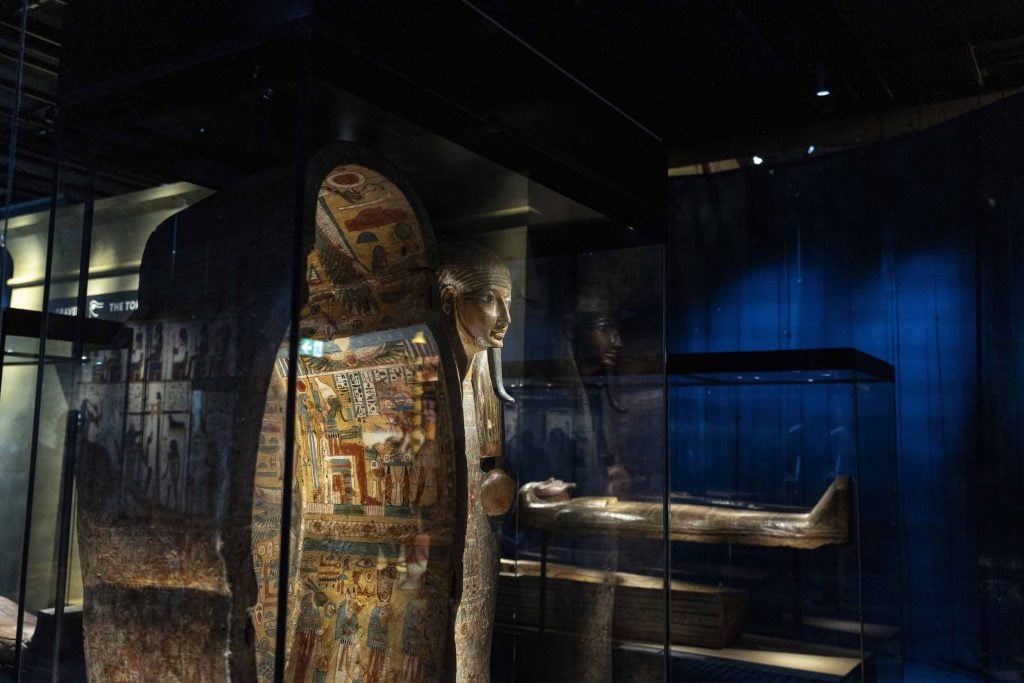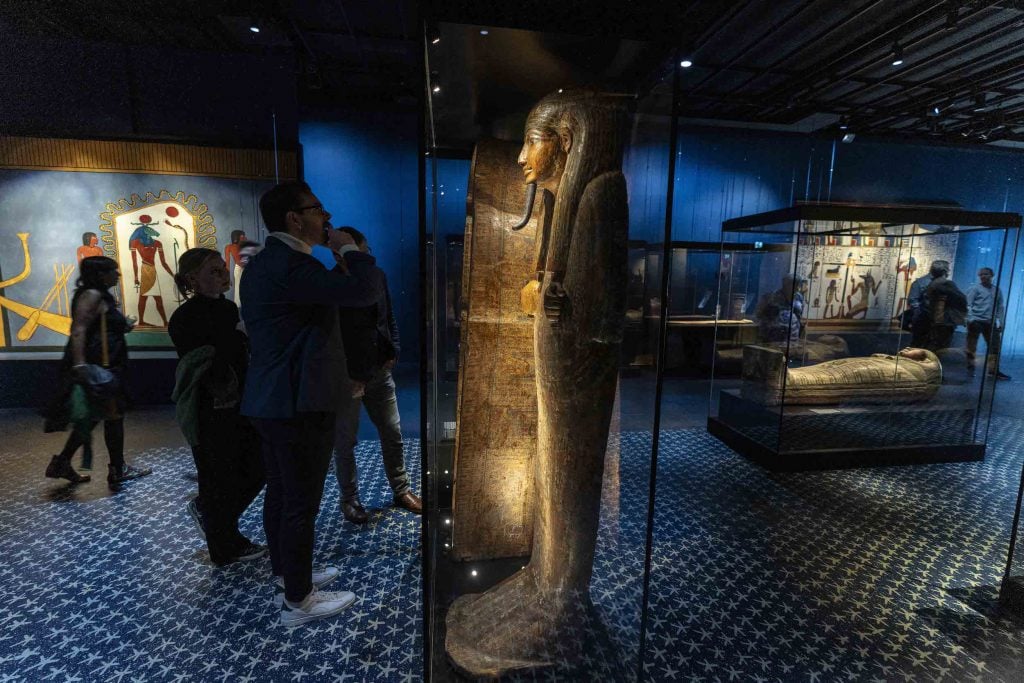Art & Exhibitions
‘Scent of Eternity’: The Smell of Egyptian Mummies Is the Focus of a Denmark Museum Exhibition
An aromatic balm used in the mummification of an ancient Egyptian has been recreated for the show.

An aromatic balm used in the mummification of an ancient Egyptian has been recreated for the show.

Richard Whiddington

A new exhibition at Denmark’s Moesgaard Museum is promising to transport visitors back 3,500 years through the power of smell. “Ancient Egypt–Obsessed with Life” does not feature sculptural works or ancient jewelry, but rather the fragrance of an embalming oil that was used for the mummification of Senetnay, an Egyptian noblewoman who lived around 1,450 B.C.E.
The exhibition is the public presentation of research conducted by a team of German archaeologists that scraped the inside of two limestone jars used to preserve Senetnay’s organs and then analyzed the residues to identify balm ingredients. To recreate the embalming scent, researchers worked with a French perfumer and a sensory museologist.
Labelled “the scent of eternity” by Barbara Huber and her team at the Max Planck Institute of Geoanthropology, the ancient aroma blended together beeswax, plant oil, fats, bitumen (a balsamic substance), and various tree resins. The detection of larch tree resin and pistacia tree resin indicates ingredients were sourced from as far away as India and Southeast Asia.

The researcher behind the recreated fragrance Barbara Huber in the laboratory in Germany. Photo courtesy of Moesgaard Museum.
“These complex and diverse ingredients, unique to this early time period, offer a novel understanding of the sophisticated mummification practices and Egypt’s far-reaching trade-routes,” said Christian Loeben, an Egyptologist at Hanover’s Museum August Kestner that houses Senetnay’s canopic jars.
Senetnay’s embalming jars were found in a royal tomb in the Valley of the Kings in 1900 by Howard Carter, the Egyptologist who would later discover Tutankhamun’s tomb. Though little is known about Senetnay, scholars say she was the wet nurse of Pharaoh Amenhotep II and became part of the Pharaoh’s entourage—a status shown by being placed in the Valley of the Kings, a necropolis pharaohs and nobles.

An installation view at Moesgaard Museum. Image: courtesy of Moesgaard Museum.
At Moesgaard Museum, Senetnay’s story is used to explain ancient Egyptian ideas of the afterlife and the rituals practiced to reach it. The exhibition presents the sequence of events from death to embalming and mummification, to the mummy entering the tomb and its spirit’s journey to the underworld.
“We are pleased to be able to present this completely new research, which has only just been published,” said Mads Holst, Director of Moesgaard Museum. “We are looking forward to giving our visitors a sensory experience of the past: the recreated fragrance of an embalming oil used in an Egyptian mummification workshop thousands of years ago.”
“Ancient Egypt–Obsessed with Life” is on view at the Moesgaard Museum, Moesgård Allé 15, 8270 Højbjerg, Denmark, through August 18, 2024.
See more images:

A bottle of the recreated scent test next to pieces of dammar resin. Photo courtesy of the Moesgaard Museum.

An installation view at Moesgaard Museum. Image: courtesy of Moesgaard Museum.

An installation view at Moesgaard Museum. Image: courtesy of Moesgaard Museum.
More Trending Stories:
Four ‘Excellently Preserved’ Ancient Roman Swords Have Been Found in the Judean Desert